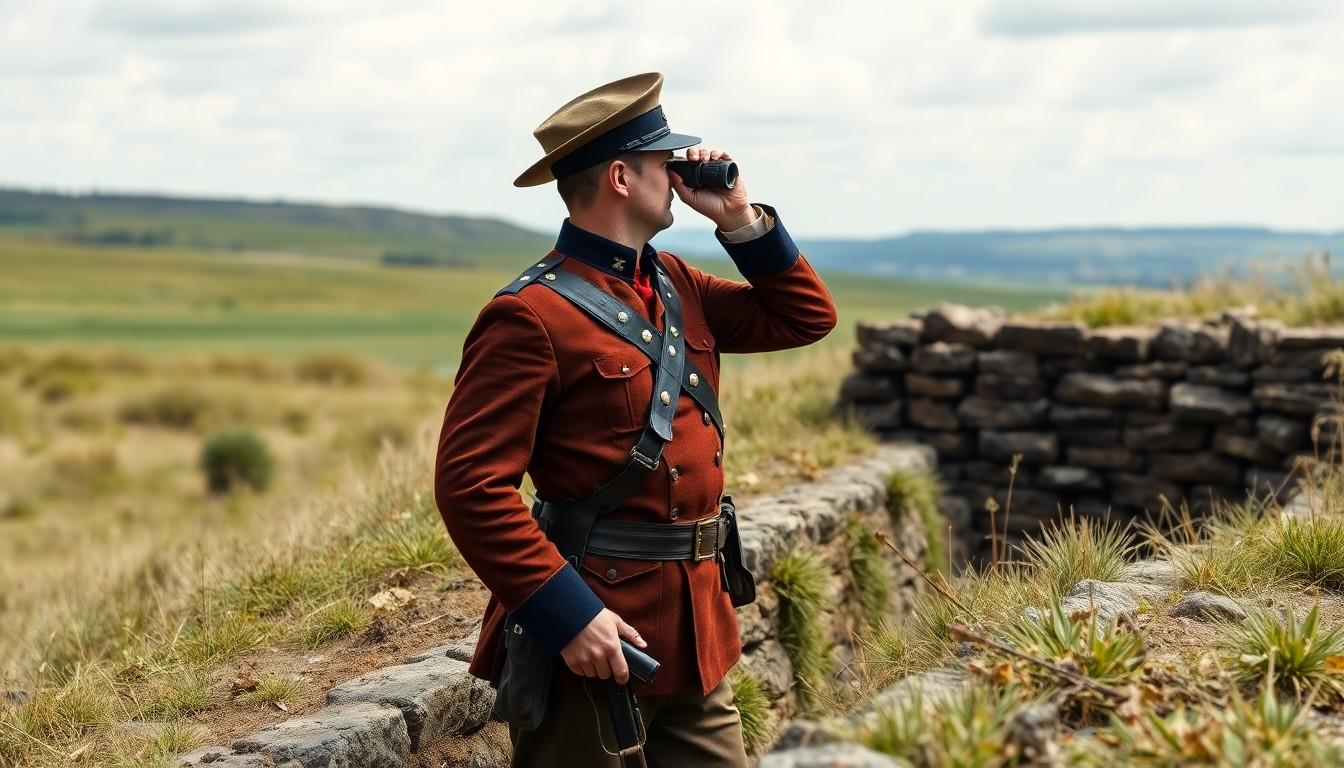The American Civil War wasn’t just a clash of armies; it was a masterclass in battle strategies that would make even Sun Tzu raise an eyebrow. With tactics ranging from bold flanking maneuvers to the infamous trench warfare, military leaders had to think on their feet—or risk ending up as mere footnotes in history.
Civil War Battle Strategies
The American Civil War showcased a range of battle strategies that significantly impacted the outcomes of various confrontations. Tactics, such as flanking maneuvers and trench warfare, defined the conflict. Leaders utilized bold flanking movements to surprise opponents. This approach often led to critical advantages during battles.
Trench warfare became prominent in several campaigns, mirroring techniques used in later conflicts. Soldiers built extensive fortifications to protect themselves from enemy fire. These defenses enabled armies to hold strategic territories despite facing overwhelming pressure.
Logistics played a crucial role in implementing strategies. Effective supply lines ensured troops received necessary provisions, which maintained their fighting capacity. Coordination among different branches of the military became vital for executing intricate plans successfully.
Commanders emphasized the importance of intelligence gathering. Understanding enemy positions and movements allowed for informed decision-making. Surveillance units gathered valuable information, which influenced tactical adjustments on the battlefield.
Furthermore, attrition warfare emerged as a significant strategy. Leaders aimed to outlast their opponents by depleting their resources and morale over time. This approach required patience and resilience from commanders and their troops.
Specialized artillery units gained prominence during this era as well. Artillery tactics evolved significantly, enhancing the destructive capability of armies. Effective use of cannons and other heavy weaponry ultimately shaped the battlefield landscape.
Innovations in communication also transformed strategies. Use of telegraphs allowed for faster transmission of orders, improving response time during engagements. Enhanced communication fostered better coordination among divisions, leading to more cohesive strategies overall.
Key Strategies Utilized in the Civil War

The Civil War featured a diverse range of military strategies that shaped its outcomes. Both defensive and offensive tactics played critical roles in determining victory or defeat.
Defensive Strategies
Defensive strategies focused on fortifying positions and minimizing losses. Armies constructed extensive trench networks that provided protection against enemy fire. Key battles, like those at Petersburg, showcased these trench systems’ effectiveness. Soldiers utilized natural geography, such as rivers and hills, to enhance defensive capabilities. Moreover, commanders often relied on static defense, allowing them to conserve resources while waiting for opportunities to launch counterattacks. Gathering intelligence on enemy movements proved essential, enabling troops to anticipate assaults and bolster defenses accordingly.
Offensive Strategies
Offensive strategies aimed at disrupting enemy lines and seizing control of key territories. Commanders employed flanking maneuvers to surprise opponents and break their formations. Notable battles, like the one at Gettysburg, demonstrated the value of a well-timed charge. Coordination between infantry and artillery units amplified offensive effectiveness, creating breakthroughs in enemy defenses. Additionally, the use of cavalry for rapid movements facilitated quick strikes against enemy flanks and supply lines. Attrition warfare focused on wearing down opposing forces through sustained assaults, creating significant pressure and reducing morale over time.
Notable Battles and Their Strategies
Key battles of the Civil War showcased various strategic innovations that affected outcomes significantly.
Battle of Gettysburg
The Battle of Gettysburg, fought from July 1 to July 3, 1863, stands as a turning point in the war. Union forces, under General George Meade, established strong defensive positions on high ground. They repelled repeated assaults by Confederate troops led by General Robert E. Lee. Flanking maneuvers were critical, particularly on Little Round Top, where Union forces held their line against overwhelming odds. Artillery units strategically positioned provided necessary fire support, disrupting Confederate advances. Infantry charges, such as Pickett’s Charge, emphasized the costs of poorly coordinated offensives. The Union victory at Gettysburg prevented Lee’s invasion of the North and boosted Northern morale.
Battle of Antietam
The Battle of Antietam, occurring on September 17, 1862, marked the bloodiest single-day battle in American history. General George McClellan commanded Union forces, who confronted Lee’s army in Maryland. McClellan’s cautious tactics allowed for effective use of artillery, delivering devastating blows to Confederate lines. The Sunken Road, known as “Bloody Lane,” became a focal point for intense fighting. Despite a tactical draw, the Union’s ability to halt Lee’s advance into the North had strategic implications. The battle provided President Abraham Lincoln the opportunity to issue the Emancipation Proclamation, altering the war’s stakes. Antietam ultimately emphasized the importance of decisive leadership in battle outcomes.
Impact of Civil War Battle Strategies on the Outcome
Civil War battle strategies significantly influenced the war’s outcome, establishing lasting military principles. Innovative tactics, including flanking maneuvers and extensive trench networks, provided distinct advantages that shaped battles. Specific examples show how these approaches altered the course of engagements, notably at Gettysburg, where Union forces leveraged terrain for a defensive edge.
The integration of logistics proved vital, ensuring supply lines remained intact and troop strength was maintained. Coordination among different military branches facilitated complex operations, often determining success or failure on the battlefield. Intelligence gathering allowed commanders to anticipate enemy movements, leading to informed decisions that impacted battle dynamics.
Attrition warfare emerged as another critical strategy, emphasizing the importance of wearing down the enemy. Depleting resources and undermining morale played essential roles in securing victories. Specialized artillery units also gained prominence, enhancing firepower and supporting infantry advances.
Defensive strategies effectively fortified positions, with notable examples at Petersburg leveraging geography to amplify resistance. Commanders often prioritized conserving resources while waiting for opportunities to counterattack effectively. Conversely, offensive tactics focused on disrupting enemy lines; synchronization between infantry and artillery units proved crucial in such engagements.
Cavalry units provided rapid strikes against enemy flanks, augmenting offensive capabilities. Each battle highlighted unique strategic innovations, ultimately demonstrating how thoughtful planning and execution influenced the war’s direction. The interactions of these strategies not only reflected on individual battles but also shaped the overall trajectory of the Civil War, underscoring the importance of tactical flexibility and adaptability in military leadership.
Lessons Learned from Civil War Battle Strategies
Adaptability emerged as a critical element in Civil War battle strategies. Leaders who quickly adjusted their tactics often gained the upper hand. For instance, successful flanking maneuvers frequently caught opponents off guard, changing the tide of engagement.
Logistics also proved essential. Maintaining effective supply lines kept armies operational, preventing shortages that could lead to defeat. Coordination among various military branches enhanced the execution of complex combat plans.
Intelligence gathering became increasingly vital as the war progressed. Commanders who accurately interpreted enemy movements made informed decisions that shaped encounters on the battlefield. Information flow, bolstered by innovations like the telegraph, allowed for real-time orders and strategic adjustments.
Attrition warfare taught military leaders the importance of resource management. Depleting the enemy’s material and morale could result in a significant strategic advantage over time. This long-term strategy gradually shifted focus, prioritizing sustainability and troop endurance.
Defensive tactics highlighted the value of well-fortified positions. Noteworthy is Petersburg, where natural geography complemented constructed defenses, aiding in the preservation of resources. Strategies effectively conserved energy while providing places of strength for potential counterattacks.
Offensive tactics demonstrated aggression’s role in seizing initiative. The Battle of Gettysburg showcased the effectiveness of coordinated infantry and artillery, enabling the Union to repel Confederate assaults. Cavalry units facilitated swift movements that threatened supply lines, altering the battlefield landscape.
Each battle offered insights that reshaped military principles, reinforcing the need for strategic flexibility. Commitment to thoughtful planning led to influential outcomes, emphasizing that the right combination of strategies could ultimately determine success.

